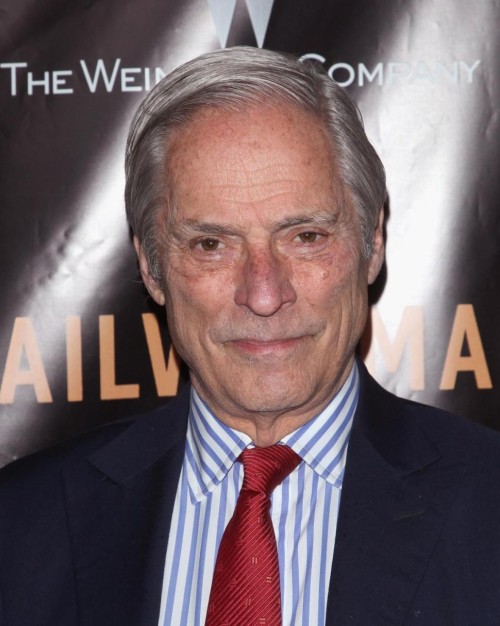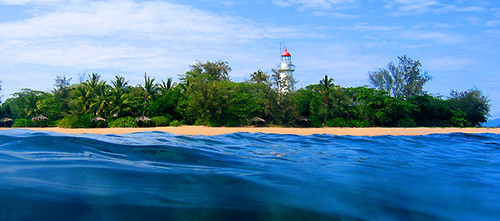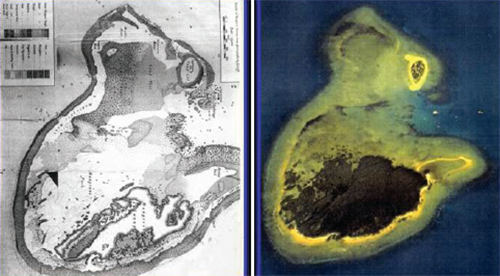Remembering Bob Simon: A class act
Bill Dennison ·Bob Simon's untimely death is a cause for sadness. I had the good fortune of spending some time with him when I was living in Australia and Bob was there to film a story on the Great Barrier Reef. I know the exact day I met Bob Simon: 10 April 1999. The reason I remember this day so well was that my second child, Laura, was born at 2:30 am on 10 April. Laura was a couple of weeks late, and I had been jockeying around to establish a date to join Bob Simon and his 60 Minutes crew in Cairns, Australia for a visit to the Great Barrier Reef. The 60 Minutes crew was doing a story on the human impacts to the reef. They had gotten wind of the fact that my Marine Botany group at the University of Queensland had been documenting the expansion of mangroves and seagrasses in the nearshore reefs, which we attributed to increased coastal inputs of sediments and nutrients.

When my wife Judy delivered our second child in the wee morning hours of Saturday, April 10th in Brisbane, I called my father back in the United States and he enjoyed being able to call various family and friends to tell them that his second granddaughter was "born tomorrow", taking into account the International Date Line. I was sure that the 60 Minutes interview would be off. We hadn't chosen a name at this point, but Judy and I had our favorite choices, but different names. I retrieved our first daughter from our friends Eva and Sonny Abal, to meet her new little sister at the Wesley Hospital. Upon reflection mid-morning, I decided that since Judy and our new little daughter were being looked after so well by the incredible staff at the Wesley Hospital, and Lizzie, our older daughter could be looked after by our tried and true babysitter, Janine, from our University of Queensland daycare Munro Centre overnight, I figured I could quickly fly up to Cairns that night, take a boat out to Low Isles, film our spot and then return the next night. I thought I would be gone one night. The other bonus to this trip was that my Aunt Ellen and Uncle Bob "Boom" Beck, from Ohio were serendipitously traveling with a tour group and they were in Cairns that one day so I could catch up with them as well.
So off I went to Cairns, and this is when I met Bob Simon. Bob's team of cameramen, sound engineers, and producers were a very well seasoned group and had obviously worked together for a long time. Bob had me sit next to him and he was very interested in what I knew about the reef but also how I ended up living in Australia. At the time, Bob was living in Israel, although his travel schedule kept him constantly on the road, so he could appreciate the perspective of being an American living abroad. He was particularly interested in my family and upbringing, and would steer the conversation back to that topic even when I tried to talk about the reef. I think he was gauging who I was and if he could trust what I would be saying about the reef.

We headed off to Low Isles the next morning and I took them around to see the expanding mangroves and seagrasses. I recall taking off my shoes to put on wet suit booties and swim fins and the film crew noticed and commented on the sparkling nail polish that my 3 year old eldest daughter, Lizzie had painted on my toes when I had fallen asleep a few days earlier. After several hours at low tide where we walked and waded around the island, the tide began to rise and we hurried to finish filming. Bob Simon walked over to the producer and said that he was ready to summarize. He spoke directly into the camera as he walked slowly across the reef flat and was both eloquent and accurate. At that point, I felt that it was the voice of 60 Minutes. He did several takes, exactly the same word for word, without a script, cue cards or notes. It was amazing. I watched, but also helped the crew move the battery packs to higher ground, as they were not used to having the rising tide to contend with. Unfortunately, one of the fancy cameras broke, and the cameraman went off to get it repaired, but it meant that we could not conduct the one-on-one interview at that point. The standard 60 Minutes protocol was to film both the interviewer (Bob Simon) and the interviewee (me) simultaneously and edit later using the exact same cameras. This kerfuffle with the broken camera meant that I missed my return flight back to Brisbane, and my quick return to wife and newborn child still in the hospital. It also meant that our 3 year old daughter needed to be farmed back out to friends Eva and Sonny Abal. The upside however, was that it also meant I spent more time with Bob than originally planned.

One of the things that impressed me about Bob Simon's perspective on environmental stewardship of the reef was that I was approaching this as a white middle class male, yet we would really need to have a more diverse and comprehensive engagement of society if we were to be successful, in getting our environmental message listened to. This perspective was quite remarkable and it has stayed with me ever since, and I have tried to increasingly break out of the habit of 'preaching to the choir', and have tried to be more cognizant of the different perspectives of people from different backgrounds.
Missing out on the first couple of days of my daughter's life to meet Bob Simon meant that I lost any vote in choosing her name. Her name became Laura Christine. Her first name was the choice of her 3 year old big sister, Lizzie, the middle name was my wife Judy’s choice. My choice of “Rebecca” for either name, was nixed, since I wasn’t present for the following 3 days while my wife and newborn ended up alone in the hospital, to make these important decisions alone, in a basically pre-cell phone world, although I was able to make a “satellite call” from Low Isles courtesy of 60 Minutes regarding the delay. My other serious blunder in that regard was that when Bob and his Sixty Minutes crew found out that I had left my newborn child and wife still in the hospital, back in Brisbane, and I would be missed my flight home, they offered to send flowers from the 60 Minutes Team. For some unknown, and in retrospect, truly regrettable reason, I said “oh that’s okay”. I have never been able to live the fact down that Laura Christine’s (aka NOT Rebecca’s) baby book does not have a card from the Sixty Minutes crew and that nice flowers were not delivered to the hospital! I should definitely have taken Bob’s advice. He KNEW people!!![Series of aerial photos showing the expansion of the seagrass meadow in the sub tidal lagoon on the NE side of Green Island from 1936 until 1994. Figure from Udy et al 1999 [pdf]. Series of aerial photos showing the expansion of the seagrass meadow in the sub tidal lagoon on the NE side of Green Island from 1936 until 1994. Figure from Udy et al 1999 [pdf].](/site/assets/files/2432/figure-p.487x587.png)
Bob traveled to Brisbane later that month with two working cameras and we filmed the interview in my University of Queensland laboratory, with the help of Judy’s and my graduate student Andrew Watkinson. Bob and I talked for over an hour and I had to trust that they would edit the more incoherent bits and produce an accurate story, which they indeed were able to accomplish. The show actually ended up airing on CBS News Sunday Morning, and I went to look for it on their website, but only was able to retrieve the transcript.
Bob Simon was one of the most worldly, knowledgeable and interesting people I have ever met. Over the years, I have enjoyed watching Bob conducting interviews with people obviously much more famous than me, and I have appreciated his approach to sizing up the people he was interviewing and then letting them tell their stories. Bob Simon was a class act and I will miss him.
About the author
Bill Dennison

Dr. Bill Dennison is a Professor of Marine Science and Vice President for Science Application at the University of Maryland Center for Environmental Science.

